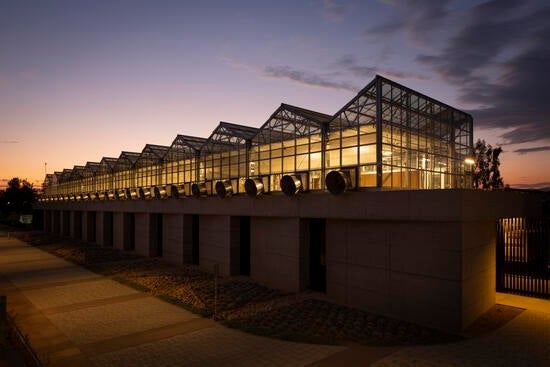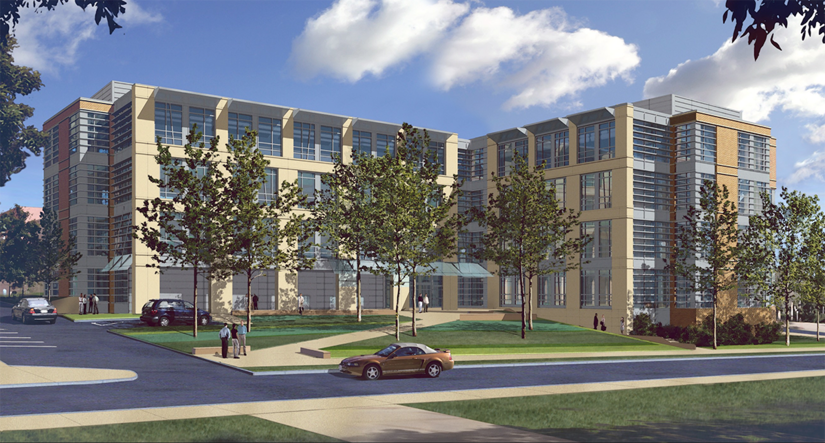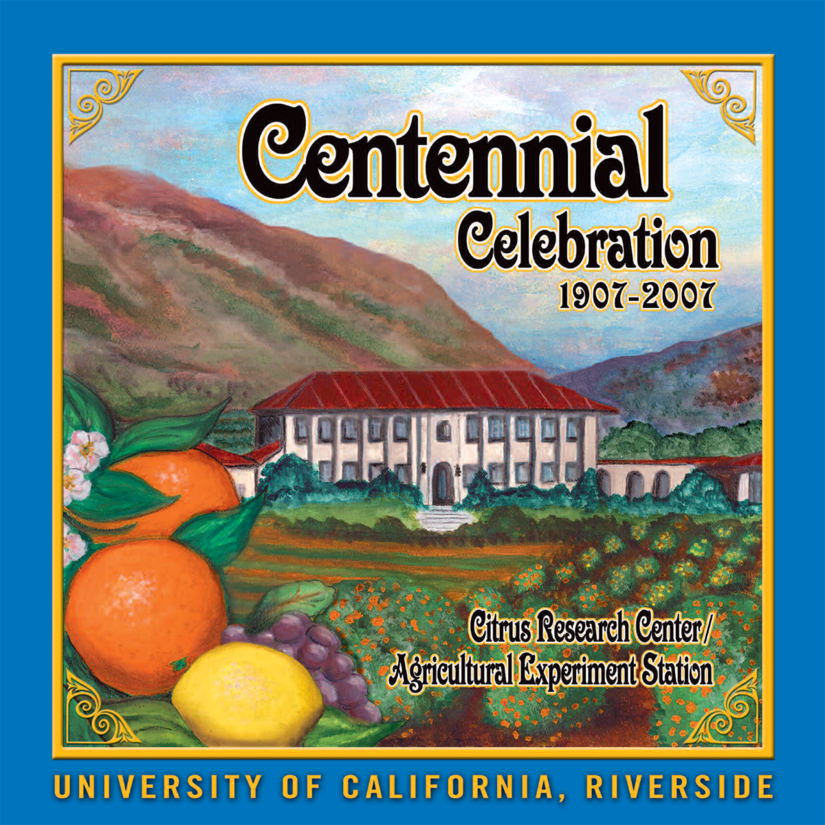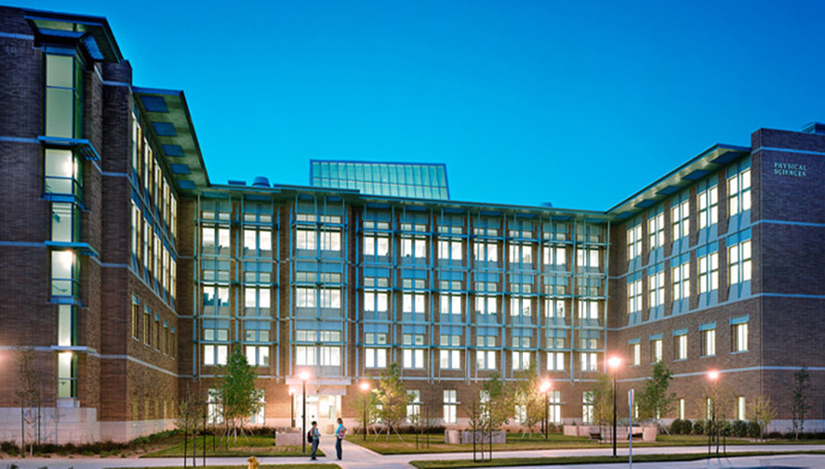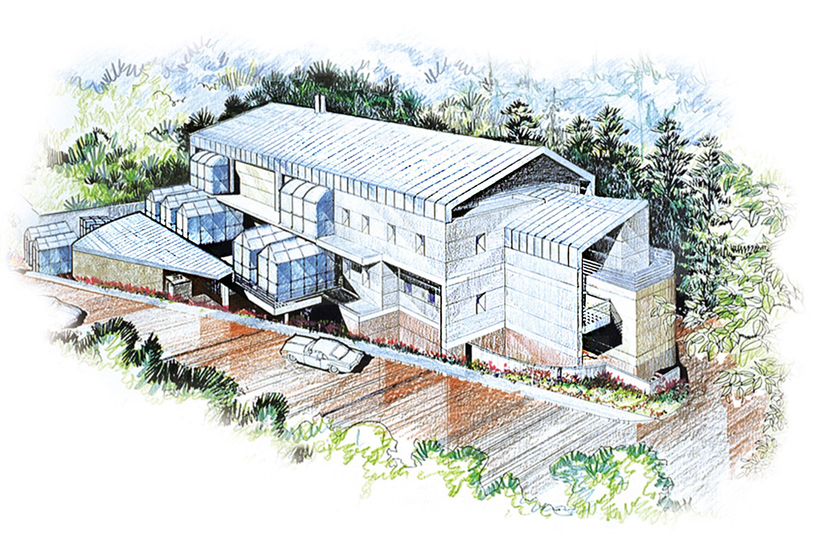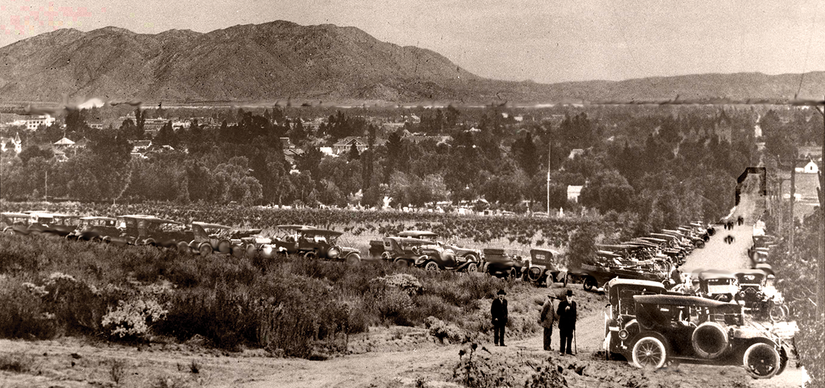Timeline
-
2020 - Present
2021
- Construction of the new 30,000-square-foot concrete, steel, and glass Plant Research 1 is completed. The building is the first new plant research facility built on campus in close to 40 years.
2020
- Led by UCR scientists from the College of Natural and Agricultural Sciences Katherine Borkovich and Isgouhi Kaloshian, the campus Coronavirus Testing Lab opened in August 2020 and began providing UCR with on-site testing and rapid turnaround of results.
-
2000 - 2019
2019
- UC Riverside opens largest research facility on campus with MRB, the Multidisciplinary Research Building
2014
- Breakthrough in Drought Tolerant Crop Research
2013
- Center for Integrative Biological Collections established
2011
- Physics PhD Program 50th Anniversary
- New Materials Science & Engineering Building opens to instruction. First major building devoted to Nanotechnology
- Tango Mandarins appear in produce aisles
2010
- Chemistry PhD Program 50th Anniversary - read more about it
- Major remodeling of Geology Building completed
- Western Water Research Archives moves to UCR and Cal State
2009
- Construction completed on the Genomics Building
2008
- Water Science & Policy Center created
2007
- 100th Anniversary Celebrated
2006
- Biological Sciences Building opened
- Ground broken for Genomics Building
- Tango seedless mandarin developed
2005
- Grand Opening of the Chemical Sciences Building
- Nobel Prize in Chemistry to Alumnus Richard R. Schrock
- DePaoli asparagus developed
2003
- Science Laboratories I building dedicated
2002
- New Entomology Building completed
- New Insectary and Quarantine Facility opened
- Bioinformatics Research Group formed
2001
- Institute for Integrative Genome Biology: Center for Plant Cell Biology, Biotechnology Impacts Center, Center for Disease-Vector Research established
- Center for Exotic Pest Research created, now Center for Invasive Species Research
- New Science Library (now Orbach Science Library) opened
2000
- US-China Agricultural Conference, establishes formal relationship between UCR and PRC Ministry of Agriculture
- Gold Nugget mandarin released
- UC Riverside opens largest research facility on campus with MRB, the Multidisciplinary Research Building
-
1980-1999
1998
- Center for Conservation Biology established
1994
- Entomology Research Museum completed
1993
- Position of "Cooperative Extension Specialist in Plant Conservation–Natural Resources" established, first in nation
1991
- Release of stingless wasp to control ash whitefly pest causing $2 billion in crop damage; release reduced fly population 103, one of the most successful biological control programs ever
1990
- Earliest known DNA recovered from 20-million-year-old leaf, with first-ever polymerase chain reaction
- Statistical Consulting Center formed; renamed Statistical Consulting Collaboratory in 2003
1989
- New protein structure, parallel beta-helix, discovered
1988
- Graduate program in toxicology established
1987
- USDA George Brown Salinity Lab established
1985
- Nematode Quarantine Facility established
1982
- A model for predicting movement of compounds through soils — the Jury Transfer function— becomes standard
- USDA National Clonal Germplasm Repository for citrus and dates established
1981
- Discovery that the pathogen Phytophthora is an elicitor of plant defenses leads to biotechnology-based research in agriculture
1980
- Oroblanco and Melogold grapefruits patented
-
1960-1979
1977
- Citrus Clonal Protection Program established, based on the 1957 Citrus Variety Improvement Program
1975
- Tissue Culture Laboratory established
- Shoot-tip micrografting, the most efficient and currently used worldwide citrus therapeutic technique, is developed
1974
- College renamed Natural and Agricultural Sciences
- Statistics Building opened
1973
- Biochemistry Department moves into newly opened Boyce Hall
- Role of mycorrhizal fungi in citrus root health identified
1972
- Exocortis, the first citrus viroid—one of smallest known plant pathogens—is discovered
1970
- National Society of Nematology meeting held at UCR
1968
- College enlarged to form College of Biological and Agricultural Sciences
- Department of Biostatistics created; renamed Statistics in 1970
1967
- Second edition of The Citrus Industry published
- First International Citrus Congress held on campus
- Vitamin D isolated and described
- Batchelor Hall completed, home to Botany and Plant Sciences
1965
- Department of Nematology created
1963
- Gibberellic acid, which slows aging of citrus, is used with 2,4-D, which slows abscission, savings California orange industry millions of dollars annually
- Botanic Gardens established
1962
- Department of Biochemistry created
1961
- Citrus Experiment Station changed to Citrus Research Center and Agricultural Experiment Station
- Undergraduate and graduate programs in entomology established
1960
- Graduate programs in agriculture begin
- UCLA agriculture college closes; many staff and research programs move to UCR
-
1940-1959
1959
- Economic threshold and economic injury level concepts of integrated pest management developed
- College of Agriculture created
1957
- International Society of Citrus Virologists holds inaugural meeting on campus
- Herbarium established
- Air Pollution Research Center established
1956
- Biometrical Laboratory created
1955
- Nematode taxonomic collection, with UC Davis, established, largest in world
- Graduate instruction in Plant Biochemistry begins; becomes Department of Biochemistry in 1962
1954
- University of California, Riverside established by the Board of Trustees
- Statewide Department of Plant Nematology established at UCR and UC Davis
- Webber Hall built
1951
- The Lemon, first of landmark biochemistry books, published; series includes The Orange (1961) and The Grapefruit (1972)
1950
- Study of citrus replant problem begins; soil fumigation is developed
- First use of hydroponics to diagnose mineral deficiencies in citrus and avocado
1949
- Entomology Annex constructed
1947
- Division of Biological Control established
1946
- Disease-resistant Troyer citrange rootstock identified as solution to citrus tristeza virus, saving California citrus industry
- First edition of landmark work The Citrus Industry published
1945
- The first efficient indexing/diagnostic technique for citrus viral diseases is developed
1944
- How smog damages plants discovered
-
1920-1939
1939
- Graduate School of Tropical Agriculture discontinued
1937
- Psorosis Freedom Program, the first citrus nursery program, is established
1934
- Nucellar embryony, the first means of freeing citrus from viruses, is discovered. Specific viruses do not pass from infected parent trees into their progeny via seed.
1933
- First biochemist hired
- Psorosis, the first viral disease of citrus, is identified
1932
- Division of Irrigation Investigations and Practices established
- Entomology Building constructed
1931
- First Insectary Building constructed
1924
- Summer undergraduate instruction in subtropical horticulture instituted
1923
- State biological control research facility transferred to Experiment Station
- Beginnings of what will become the Entomology Museum established
-
1907-1919
1918
- Citrus Experiment Station Box Springs site dedicated, March 27
1917
- Citrus Variety Collection replanted on 5 acres at current site with 500 types
1916
- By now, CES research program has six divisions:
- agricultural chemistry
- plant physiology
- plant pathology
- entomology
- plant breeding
- orchard management
1915
- Dept. of Entomology founded
1914
- Cooperative Extension Service founded following passage of the Smith-Lever Act by Congress Cultivations Unit established, later named Agricultural Operations
1913
- Graduate School of Tropical Agriculture organized
1912
- Nematology Lab set up after discovery of citrus nematode in Southern California
1910
- Citrus Variety Collection established
1907
- Citrus Experiment Station founded in Riverside at the foot of Mount Rubidoux
Please send additions and/or corrections to cnascommunications@ucr.edu.
